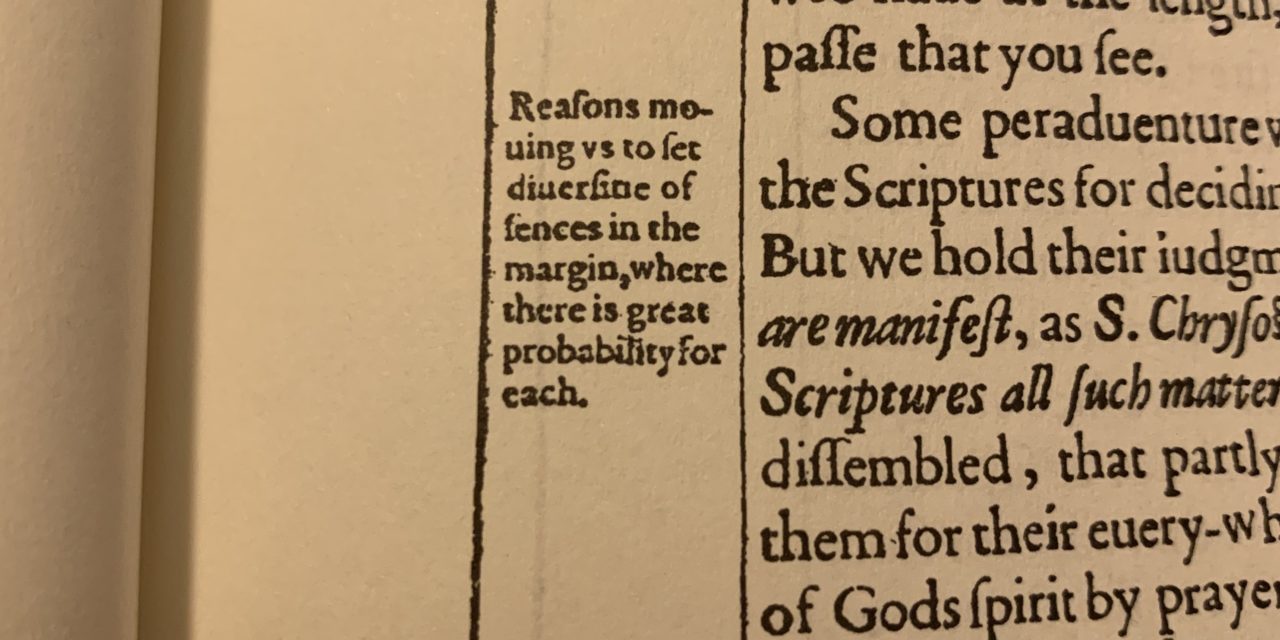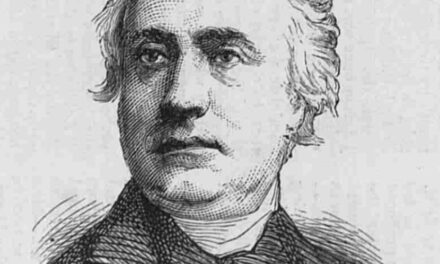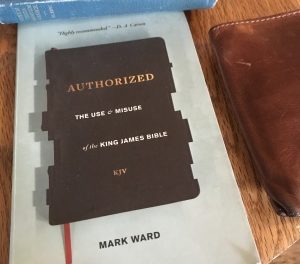All translators are aware of the ambiguities of translating. No translator can always be sure he or she has correctly understood and correctly rendered the text. There is always interpretation involved. Marginal notes or comments of different kinds have for centuries been a way that translators could express at least some of the uncertainty of translation to the reader. Erasmus used them (as annotations that were like endnotes). Stephanus used them (in the first critical apparatus). Beza used them extensively. Tyndale used them. The KJV is no different. The 1611 KJV contained thousands of marginal notes. And this despite the King’s order against ideologically motivated marginal notes (since he hated the ones in the Geneva that questioned the authority of the monarchy). F. H. A. Scrivener explains;
One of the most judicious of the Instructions to the Translators laid down for their guidance by King James I., and acted upon by them with strict fidelity, prescribed that ‘No marginal notes at all be affixed, but only for the explanation of the Hebrew or Greek words, which cannot, without some circumlocution, so briefly and fitly be expressed in the text.’ It had by that time grown intolerable, that on the self-same page with the text of Holy Scripture, should stand some bitter pithy comment, conceived in a temper the very reverse of that which befits men who profess to love God in Christ.
– F.H.A. Scrivener, The Cambridge Paragraph Bible: Of the Authorized English Version, xxiv.
Why do they matter? David Norton, editor of the New Cambridge Paragraph Bible, explains;
For a student of the translators, the original notes have a special interest for what they reveal of their understanding of the text and their practice as translators. A general reader should also find them valuable for the closer contact they bring with the original texts. Moreover, they are a constant reminder both that translation is an inexact process and that the original texts are sometimes uncertain or obscure. Consequently they are preserved in The New Cambridge Paragraph Bible.
– David Norton, A Textual History Of The King James Bible, pg. 163
By Scrivener’s count (all the tallies below are his), there are 8,422 marginal notes in the original 1611 KJV, (6,637 OT, 1,018 Apocrypha, 767 NT), and 494 additional ones that were added by the various editors who produced later editions (in 1629, 1638, 1762, and 1769). One modern computer total differs slightly (giving 6,565 marginal notes in the OT, and 777 in the NT, for a total of 7,342 marginal notes, not counting the Apocrypha).
The kind of notes printed in the margin could be categorized several different ways. There are three different symbols (†, ||, *) used to express marginal notes that serve five basic functions. Thus, one could speak of three categories of notes (classifying by symbol or form, as Norton does), or five categories of notes (classifying by basic function). The 1611 in fact includes numerous inconsistencies and errors in its presentation of these symbols. For example, in Gen.17:4, one can see an * meant to indicate a marginal note not included, and while the text has || that indicate a note with an alternate translation or reading, the margin has a † that would indicate a more literal translation. They also often employ the symbols in a rather inconsistent way, and so categorizing by function seems the best track.
The marginal notes have been reprinted in the New Cambridge Paragraph Bible described by Mark Ward here, by myself in the video below, and by the editor in an interview that is now for some reason only accessible in the archive here. They have also been helpfully collected into a single site available here. Links are provided below to the relevant images of 1611 pages.
More Literal Translations
These are prefixed by the dagger sign “†” and then, “Heb.,” “Cal.” or “Gr.” noting a more literal translation of the original languages than was deemed suitable for the text. Scrivener counts 4,111 of these in the Old Testament, (77 of which relate to the Aramaic portions), and 112 in the NT.
For example, in Acts 12:20, the KJV text reads, “the † kings chamberlain.” The cross symbol alerts us to a marginal note, which reads, “† Gr. that was over the kings bedchamber.” The note is pointing out how, literally, the phrase τὸν ἐπὶ τοῦ κοιτῶνος τοῦ βασιλέως would be translated, “the one over the king’s bedroom.” Yet it is clearly an idiom being used as a title, that is, “the king’s chamberlain.” BDAG notes that the word normally meaning, “bedroom” or “bedchamber,” is being “used as part of a title…the one in charge of the bed-chamber, the chamberlain.”
Or, for example, in Acts 19:35, the text reads, “the city of the Ephesians is † a worshipper of the great goddess Diana.” But the † symbol points to a marginal note, which reads, “† Gre. the temple-keeper.” BDAG notes that the word means, “honorary temple keeper,” that is, “one who is responsible for the maintenance and security of a temple: ‘temple keeper.’” This was in fact the reading of the Bishop’s text they revised. Yet the translators have for some reason chosen to translate the word less literally as “worshipper.”
To take another example, in 1 Peter 3:6 the text reads, “even as Sara obeyed Abraham, calling him lord: whose † daughters ye are, as long as ye do well, and mare not afraid with any amazement.” Yet the marginal note reads, “† Gr. children.” They are noting that the Greek text literally refers to “children” with the neuter word τέκνα. But they apparently don’t like the suggestion that a text calling for submission after the pattern of Sarah could apply to men, so they have, less literally, rendered the text in the feminine gender. Rather than hide, they alert us to this fact directly.
We could note Rom. 1:4; 6:7; 8:6-7 as other examples. In each of these and many other cases, the note signals not just an alternate translation that might be equally probable, but a more literal translation that they have opted against for various reasons.
Alternate Translations
These are in a sense one part of a larger category of notes dealing with “alternate readings.” These are prefixed by double vertical lines “||” and then, “Or,” noting that there is another equally probable way that the text may be translated other than that expressed in the text. Scrivener counts 2,156 of these in the OT, and 582 in the NT.
For example, in Deuteronomy 28:22 the text reads “sword.” But the double vertical lines “||” alert us to a marginal note, which reads, “|| Or, drought.” This is an alternate way to translate the text (or actually, a different way to point it). The ESV retains an identical note.
Or take 2 Kings 19:25. The KJV text reads, “Hast thou not heard long ago how I have done it, and of ancient times that I have formed it? Now have I brought it to pass, that thou shouldest be to lay waste fenced cities into ruinous heaps.” But the marginal note explains that this could also be translated as, “Hast thou not heard how I have made it long ago, and formed it of ancient times? Should I now bring it to be laid waist, and fenced cities to be ruinous heaps?”
Scrivener noted of the origin of most of these;
Some of these, no doubt, are taken either from the text or margin of the Bishops’ Bible, which had been read in Churches for about forty years when the Authorized Version was made, and which King James had expressly directed ‘to be followed, and as little altered as the truth of the original will permit.’ But far the greater part must be traced to another source, to which adequate attention has not yet been directed. Of the several Latin translations of the Old Testament which were executed in the sixteenth century, that which was the joint work of Immanuel Tremellius [1510–80], a converted Jew (the proselyte first of Cardinal Pole, then of Peter Martyr), who became Professor of Divinity at Heidelberg, and of his son-in-law Francis Junius [1545–1602], was at once the latest and the most excellent.
– The Cambridge Paragraph Bible, xxvi.
He further took up the allegation sometimes made, that the marginal note almost always provides a better translation than that which they include in the text. Yet he, (rightly) vindicated the Translators against such an extreme charge;
It would be indeed a conspicuous instance of bad judgment on the part of the Translators, if it could be justly maintained that where two or more senses of a passage were brought fairly before them, they mostly, or even frequently, put the worst into the body of their work. But no competent scholar who has carefully examined the matter will think that they have gone so far wrong.
– The Cambridge Paragraph Bible, xxv–xxvi.
Textual Variants / Alternate Textual Readings
These are also in a sense a smaller subcategory of “alternate readings” like the alternate translations above. They are likewise typically prefixed by double vertical lines || and then, “Or” noting that there is a textual variant in the passage, and an equally probable textual form that may better represent the wording of the original autographs. Sometimes instead of “Or,” they are introduced by the phrase, “Some copies read,” and occasionally by a combination of the two, in different orders. Occasionally (apparently by oversight) they are presented with the cross symbol as though an alternate translation. By Scrivener’s count, there are 67 of these in the OT (31 of which express the Masorah textual doubts), and 37 in the NT (15 more were added by the later editors in 1762 and 1769).
Scrivener lists each of the marginal notes which he judges to be raising text-critical issues in the NT, noting that almost all are derived from Beza’s text or notes. I list his references here, linked to 1611 images, and give Scrivener’s brief notes about their origins, when he provides them. I then include a small selection of the 1611 text and the marginal reading in brackets (mostly with modern spelling but not always). I offer these without comment:
- Matt. i. 11 – [KJV 1611 reads “And || Iosias begate Iechonias and his brethren.” The marginal note indicates, “|| Some read, Iosias begate Iakim, and Iakim begate Iechonias.”]
- Matt. vii. 14 – [KJV 1611 reads “|| Because strait is the gate” but the marginal note reads “|| Or, how.”]
- Matt. ix. 26 – “Perhaps αὐτοῦ of Codex Bezæ [D] is represented in the text: ‘the fame of this’ Bishops’”; [KJV 1611 text has “|| the fame,” but the marginal note reads “|| Or, this fame.”]
- Matt. xxiv. 31 – [KJV 1611 reads “with || a great sound of a trumpet,” while the marginal note reads “|| Or, with a trumpet and a great voice.”]
- Matthew xxvi. 26 – [KJV 1611 reads, “Jesus took bread and || blessed it.” But the KJV translators added the marginal note that reads, “|| Many Greek copies have, gave thanks.”]
- Mark ix. 16 – “αὑτούς Beza 1565, afterwards changed by him to αὐτούς”. [KJV 1611 reads “what question ye || with them?” The marginal note of the translators reads “|| Or, among yourselves.”]
- Luke ii. 38 – [In the text of the KJV 1611, the last words of verse 38 are “in || Jerusalem.” In the margin, the translators wrote, “|| Or, Israel.”]
- Luke x. 22 – “The words in the margin are from the Complutensian edition and Stephens 1550.” [In the text of the 1611, verse 22 begins, “|| All things are delivered to me of my father.” In the marginal note, the KJV translators wrote, “|| Many ancient copies add these words, And turning to the disciples he said.”]
- Luke xvii. 36 – [The KJV 1611 has this verse in the text, which reads, “|| Two men shall be in the field, the one shall be taken, and the other left.” Yet the KJV translators explain in a marginal note, “|| This, 36. verse is wanting in most of the Greek copies.”]
- John xviii. 13 – “The words of this margin, except the reference to ver. 24, are copied from the text of the Bishops’ Bible, where they are printed in the old substitute for italic type.” [The text of the KJV 1611 in John 18:13 reads “And led him away to Annas first, (for he was the father in law to Caiaphas) which was the high priest that same year. ||” The Marginal note uses the double line sigla to explain that verse 13 is expanded to contain the statement they have placed in verse 24 reading “|| And Annas sent Christ bound unto Caiaphas the high priest, ver. 24.”]
- Acts xiii. 18 – [The text of the KJV 1611 reads “and about the time of forty years † suffered he their manners in the wilderness.” The Marginal note once again introduces some doubt by the KJV translators, noting, “† Gr. ετροποφοπησεν perhaps for ετροφοφορησεν as a nurse beareth or feedeth her childe, Deut. 1:31. 2 macc 7.27, according to the Sept. and S. Chrysost.” Interestingly, this note is presented with the cross symbol and format as explained above, which might at first appear to be an alternate translation, though it is clearly a textual note.]
- Acts xxv. 6 – [The text of the KJV 1611 reads in the first part of the verse “And when he had tarried among them || more than ten days…” The Marginal note again notes the translators uncertainty by noting, “|| Or, as some copies reade, no more than 8 or 10 dayes.”]
- Rom. v. 17-18 – [The KJV 1611 text reads, “For if || by one man’s offense…” while the marginal note twice explains “|| Or, by one offense.”]
- Rom. vii. 6 – [The text of the KJV reads, “|| That being dead wherein we were held” while in the margins the translators noted, “|| Or, being dead to that.”]
- Rom. viii. 11 – [The text of the KJV reads “|| by his spirit” but the marginal notes states, “|| Or, because of his spirit.”]
- I Cor. xv. 314 – [The text of the KJV reads “I protest by || your rejoicing” but the margin notes “|| Some read, Our.”]
- II Cor. xiii. 45 – [The text of the KJV reads, “we also are weak || in him” but the margin notes, “|| Or, with him.”]
- Gal. iv. 15 – [KJV text, “|| where is then.” Margin, “|| Or, what was then?” Scrivener’s TR includes in his text (purporting to underlie the KJV) the reading that the KJV translators put in the margin, since he felt the reading based in the Vulgate and refused to back-translate, so his text doesn’t match the actual Greek text behind the KJV.]
- Gal. iv. 17 – “ὑμᾶς Compl. Erasm. Steph. Beza 1565, ἡμᾶς Beza 1589, 1598.” [The text of the KJV reads, “they would exclude || you” but the margin notes, “|| Or, us.”]
- Eph. vi. 9 – (ὑμῶν καὶ αὐτῶν Compl.). [The text of the KJV has “|| your master” but the marginal note adds, “|| Some read, both your, and their master.”]
- I Tim. 4:15 – [KJV text, “appear || to all.” Margin, “Or, in all things.” That is, “that your progress might appear to all” meaning Paul wants Timothy’s growth to be seen by everybody, or, “that your progress in all things might be evident” meaning Paul want’s Timothy’s growth to be pervasive in extent. Once again Scrivener’s Greek text agrees with the margins not the text of the KJV, since he felt this was a Vulgate influenced reading.]
- Heb. iv. 2 – “συγκεκραμένους margin, with Compl. Vulg.” [KJV text, “|| not being mixed with faith in them that heard it.” Margin, “|| Or, because they were not united by faith to.”]
- Heb. ix. 2 – “ἅγια text, with Compl. Erasm. Beza: ἁγία marg. with Steph.” [KJV text “|| the Sanctuary.” Margin, “|| Or, holy.”]
- Heb. xi. 4 – “λαλεῖ text, with Erasm. Aldus, Vulg. English versions: λαλεῖται margin, Compl. Stephens, Beza6.” [KJV text, “|| yet speaketh.” Margin, “|| Or, is yet spoken of.”]
- James ii. 18 – “χωρὶς text, Colinæus 1534, Beza’s last three editions, Vulg.: ἐκ margin, Compl. Erasm. Stephens, Beza 1565, all previous English versions.” [KJV text, “show me thy faith || without thy workes.” Margin, “|| Some copies reade, by thy workes.”]
- I Pet. i. 4 – “ἡμᾶς Steph.” [KJV text “|| For you.” Margin, “|| Or, for us.”]
- I Pet. ii. 21 – “ὑμῶν Beza 1565, not in his later editions: this marginal note is also in the Bishops’ Bible.” [KJV text “For || us.” Margin, “|| Some reade, for you.”]
- II Pet. ii. 2 – “ἀσελγείαις marg. Compl.” [KJV text, “their || pernicious ways.” Margin, “|| Or, Lascivious ways, as some copies read.”
- II Pet. ii. 11 – “marg. as Vulg. Great Bible.” [KJV text, “|| against them.” Margin, “|| Some reade, against themselves.”]
- II Pet. ii. 18 – “ὀλίγον Compl. Vulg.” [KJV text “who were || clean escaped.” Margin, “|| Or, for a little, or a while, as some reade.”]
- II John i. 8 – “εἰργάσασθε … ἀπολάβητε marg. Vulg.” [KJV text, “which we have || wrought, but that we receive.” Margin, “|| Or, Gained, Some copies reade, which ye have gained, but that ye receive, etc.”]
- Rev. iii. 14 – “margin as Compl., all previous English versions.” [KJV text, “|| of the Laodiceans.” Margin, “|| Or, in Laodicea.”]
- Rev. vi. 8 – “αὐτῷ margin, with Compl. Vulg. Bishops’ Bible.” [KJV text, “|| unto them.” Margin, “|| Or, to him.”]
- Rev. xiii. 1 – “ὀνόματα margin, with Compl. Vulg. Coverdale.” [KJV text, “the || name.” Margin, “|| Or, names.”]
- Rev. xiii. 5 – “margin adds or prefixes πόλεμον to ποιῆσαι of the text, with Compl. Colinæus 1534, but not Erasm., Beza, Vulg. or Revelation English versions.” [KJV text, “given to || continue.” Margin, “|| Or, to make warre.”]
- Rev. xiv. 13 – “marg. ἀπάρτι λέγει ναὶ τὸ Πνεῦμα with Compl. Col.” [KJV text, “|| from henceforth: yea, saith the Spirit.” Margin, “|| Or, from henceforth saith the Spirit, yea.”
- Rev. xvii. 5 – “marg. is from Vulg. and all previous English versions.” [KJV text, “THE MOTHER OF || HARLOTS.” Margin, “|| Or, fornications.”]
_____
He notes that the 1762 added fourteen more text-critical notes, and the 1769 added one more;
1762. S. Matt. vi. 1; x. 10; 25; xii. 27 (“† Gr. Beelzebul: and so ver. 24”) now dropped. S. Luke xxii. 42 (incidentally excluding παρένεγκε). Acts viii. 13. Heb. x. 2 (see Appendix E, p. ciii.); 17 (probably from the Philoxenian Syriac version, then just becoming known). James iv. 2, revived from the Bible of 1683 (φθονεῖτε Erasm. 1519, Luther, Tyndale, Coverdale, Great Bible, Geneva 1557, Bishops’, but perhaps no manuscript). 2 Pet. i. 1 (see Appendix E, p. c.). 2 John 12 (ὑμῶν Vulg.). Rev. xv. 3 (ἁγίων text, after Erasm., English versions: the alternative readings in the margin being ἐθνῶν of Compl., which is much the best supported, and ἁγίων of the Clementine Vulgate, of some of its manuscripts, and the later Syriac); xxi. 7 (margin ταῦτα Compl. Vulg. rightly); xxii. 19 (marg. ξύλου for second βιβλίου Compl. Vulg. rightly).
1769. S. Matt. xii. 24 taken mutatis mutandis from the marginal note of 1762 on ver. 27.
– Scrivener, The Cambridge Paragraph Bible, xxxi–xxxii.
Most likely, other examples could be found scattered among the marginal notes of the 1611. Scrivener for example catalogued only some 18 marginal notes in the KJV NT which he considered to be raising textual variants in his “Supplement” to the KJV in 1845, but then counted 35 in 1873 in the introduction to his Cambridge Paragraph Bible, and counted 37 by 1884 in his expanded work on the Authorized Edition. Such a trajectory suggests that even this is not an exhaustive list.
In any case, these represent places where the KJV expressed directly its doubts concerning the wording of the original text. As Nicholas Hardy notes about these marginal notes while arguing that both the KJV translators and its original readers employed a far more critical approach to the text than is often realized today, urging further study of the critical approach of the translators;
There is, moreover, plenty of reason to believe that contemporary readers thought about the King James Bible in a similar way to the scholars who produced it. Indeed, the Bible itself encouraged them to do so, with its paratexts addressing text-critical and other scholarly problems in ways that are still poorly understood.
– Nicholas Hardy, Revising The King James Apocrypha, pg. 311.
Miscellaneous information
There are three basic kinds of information given in this type of note. In the OT, 63 notes give the meaning of Proper names; 240 provide harmonizing information with a parallel text or explanations. In the NT, 35 marginal notes provide miscellaneous information relating to explanations or brief exposition. These can be introduced in almost any of the ways described for the types of notes listed above.
Cross References
These are prefixed with an asterisk (*) and then an abbreviated Scripture reference judged to be relevant to the present context. Scrivener completely redid these for the Cambridge Paragraph Bible, noting that many or most of those included in the 1611 were essentially worthless for the English reader, as they typically refer to the chapter and verse divisions of the Latin Vulgate rather than the chapter and verse divisions of the English Bible they were revising. Latin was the primary language of the translators, and it was in Latin that they read their Bibles, but the regular differences of versification (especially in Psalms) makes the use of Vulgate differences an obstacle for the English reader. He notes, “In fact, more than half the references contained in the edition of 1611 are derived from manuscript and printed copies of the Vulgate Latin Bible, and thus present to us the fruits of the researches of mediaeval scholars and the traditional expositions of the Western Church.” He goes on to explain;
As we cannot praise very highly the typographical correctness of the Bibles of 1611 in other particulars (see p. 8), so it must be stated that no other portion of the work is so carelessly printed as these parallel texts, each issue exhibiting errors peculiar to itself , but few leaves indeed being exempt from some gross fault com- mon to them both. The references to the Psalms direct us constantly to the wrong verse; namely, that of the Latin Vulgate from which they were first derived, not to that of the English Bible on whose pages they stand. The marks of reference from the text to the margin are so often mis- placed, that it would be endless to enumerate glaring errors in regard to them which have long since been removed.
– Scrivener, The Authorized Edition, Pg. 117-118.
Interestingly, Norton notes that when the text was redone for the NCPB, he chose not to investigate or update these marginal notes beyond the work of Scrivener, because of the incredible difficulty of such an enterprise, and because he felt Scrivener had done an inimitable job at the task. Thus the marginal notes of the NCPB are essentially the same as those of the original CPB (Norton, A Textual History, pg. 163-164).
Conclusion
Thus we can see that if we classify by function, there were five basic forms of marginal notes found in the original 1611 KJV. But what was their own attitude towards these notes? To that question we turn in our next blog post, accessible here.





Hi Tim,
I have a KJB from Local Church Bible Publishers and it does not have the dagger, parallel lines, or asterisks .
Some verses have the superscript numbers that correlate with the marginal note that says “some copies read” but what I am seeking to understand is what do the other words with superscript mean? A word will have a superscript number that correlates in the margin to an italicized word that or phrase. I have heard that this is a more literal translation but when it comes to phrases, sometimes it can really change a lot about what is being said in the text.
When you have the time, could you help clarify? I would love to hear your thoughts on this.
Thanks for all that you do
Aaron